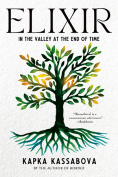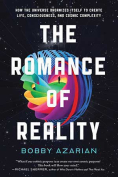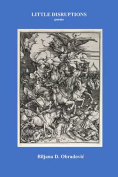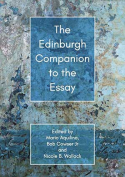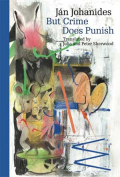The Romance of Reality: How the Universe Organizes Itself to Create Life, Consciousness, and Cosmic Complexity by Bobby Azarian
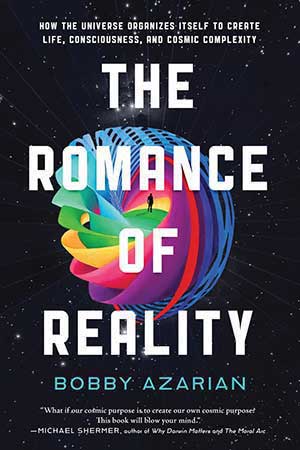 Dallas. BenBella Books. 2022. 320 pages.
Dallas. BenBella Books. 2022. 320 pages.
A good amount of caution is advised when approaching any work that claims to present a “theory of everything,” which “bridge[s] the gap between the quantum and cosmological with principles from evolutionary biology,” all while solving the hard problem of consciousness and ensuring us humans of our free will. Since nothing less is the set ambition of science writer Bobby Azarian’s book The Romance of Reality, I shall follow Faulkner's advice and rate him “on the basis of [his] splendid failure to do the impossible.”
The Romance of Reality is structured in three parts. The first two piece together a “non-reductive theory of everything,” which the author calls the “Integrated Evolutionary Synthesis” (IES). The third part, “Transcendence,” discusses free will and consciousness. Azarian’s IES paints a picture of a world where the emergence of life is all but a thermodynamic necessity. Evolution is understood as statistical learning and neither random nor limited to biology. Instead, it reigns on all levels of existence, driving the emergence of ever more complex constellations with ever more advanced learning and information-processing abilities.
Azarian’s IES strings together several results and arguments, not all of which count as established science. Some devices might be close to inexistent (e.g., semantic information measures), others proven only in much-simplified simulations rather than produced in the lab (e.g., dissipative adaptation), and still others have had doubt cast on them whether they should count as a scientific theory at all. Neuroscientist Anil Seth in his book Being You, for example, views the free energy principle “as a piece of mathematical philosophy rather than a specific theory,” pointing to its lack of falsifiability. The results that Azarian enlists to support his IES are noteworthy, thought-provoking contributions. However, many still lack the maturity of a full theory. Moreover, the author does not always draw a clear demarcation line between established theory and an early result.
As if the scope of his first two chapters was not yet big enough, the third opens with the author’s views on free will and the mind-body problem, only to pivot to a discussion of the fine-tuning problem, the multiverse idea, and interpretations of quantum mechanics. The author is not alone in jumping into a discussion of free will without first carefully defining what it is that he is talking about. Azarian’s argument for free will itself relies on two pillars—the first aims to discredit arguments against it, and the second points to quantum indeterminacy and recent publications on “causal emergence.” The author, however, never truly engages with rational or first-person arguments against free will. He never, for example, discusses the causal exclusion principle, the position that events cannot have more than one sufficient cause.
Rather, he contends that without free will, the justice system would be unjust, individual accomplishments would have no meaning, and opponents of free will are living in denial, believing “deep down that they have some choice.” The first two points are not arguments about the ontology of our will at all but rather about no free will implications on our ethics and notions of merit. On the latter point, telling a friend that “I decided X,” while simultaneously believing that I have no free will, is no more a sign of cognitive dissonance than an atheist saying, “God help us.”
Quantum physics’ inherent randomness, according to Azarian, does not itself qualify as somehow providing a viable mechanism for free will. He does, however, see it as providing a big enough window in an otherwise deterministic universe for free will to emerge on larger scales. Regrettably, he gives no hint on how hypothetical free will at larger scales would interact with and determine currently believed to be random quantum processes on the microscale. Many physicists, Einstein among them, have tried and failed to find a deterministic alternative to quantum mechanics.
Lastly, Azarian leans on recent work by neuroscientist Erik Hoel and others on so-called causal emergence to demonstrate strong emergence—namely, the emergence of something that cannot be explained by the workings of its smaller constituents. This effort, however, falls short. In one paper cited in The Romance of Reality, Fernando E. Rosas et al. state: “Our theory of causal emergence is about predictive power not ‘explicability,’ and therefore is not related to views on strong emergence.” Regrettably, Azarian does not take the time to make this important point, nor does he comment on the complexity of systems that the causal emergence literature has considered thus far.
It is impossible to comment on every topic Azarian touches without writing a book of similar size. After finding a solution to the mind-body problem in the emergence of minds as a new state of matter, a view I broadly happen to share, he ends The Romance of Reality with an outlook on life’s cosmic significance, somewhat looping back to themes of his book’s first part. He is candid about the vast holes and uncertainties in our understanding of the universe’s ultimate fate. Still, he remains hopeful that “a self-aware system [will eventually] engineer an endless state of subjective experience that stretches on forever.”
At the end, what are we left with? The Romance of Reality is a book of vast interdisciplinary scope. It not only drives Azarian’s central thesis that the evolution of the universe has directionality toward increasing complexity, intelligence, and self-awareness but also tries to assure us of our free will while opening the possibility to infinite subjective existence. Sadly, not only do the number of fields and results that Azarian enlists for his endeavor leave the reader struggling, but also the depth of exposure and transparency about the maturity of results are at times lacking. The reader who seeks understanding, rather than a first exposure, will be left wanting.
Felix Haas
Zurich, Switzerland
